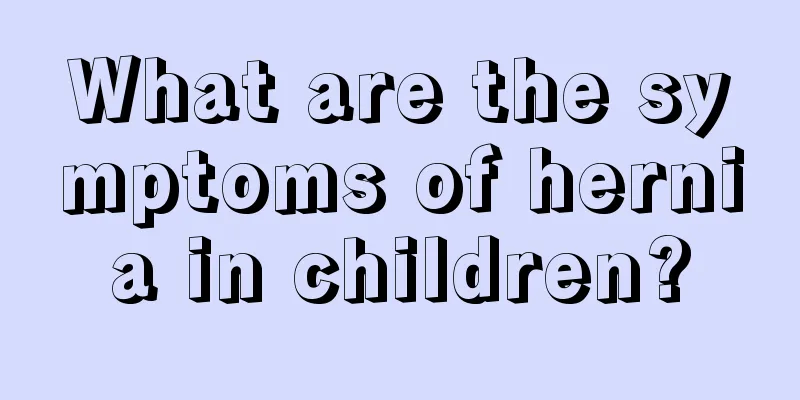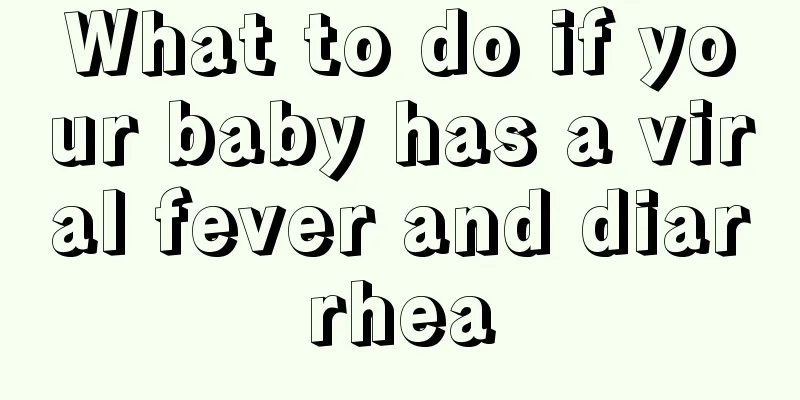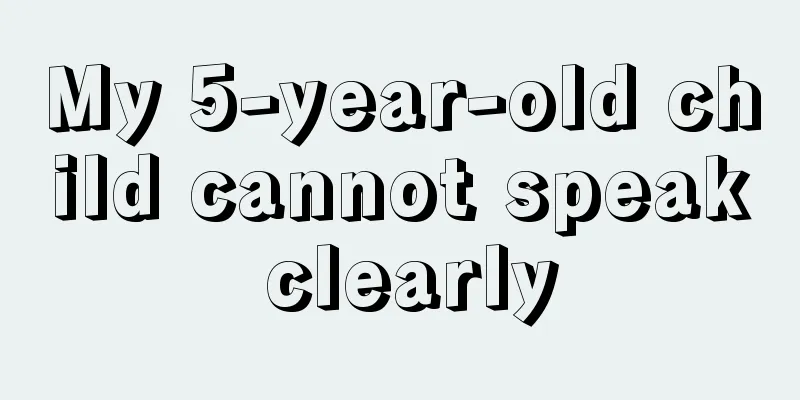What are the symptoms of hernia in children?

|
I believe that many parents will encounter the problem of pediatric hernia in the process of raising their children. If you don’t understand this problem, it may delay the child’s treatment time, which is very bad for your child’s health. So in order to avoid not knowing what to do in the future, you must have a certain understanding of it in advance, so that if you encounter problems in the future, you can solve the problem easily. "Hernia" is a common disease in pediatric surgery. Most cases are discovered at 2-3 months of age, but some are not discovered until 1-2 years of age. The incidence rate is high in premature infants and low-birth-weight infants. Medically speaking, what people usually call pediatric hernia mainly refers to congenital indirect hernia. It usually occurs when there is increased intra-abdominal pressure. A walnut-sized swelling forms on the navel of a child and protrudes outward. It is spherical or hemispherical in appearance, has a small scar on the top, and feels soft. This is one of the symptoms of infant hernia. The tumor is characterized by its reversibility. During the day, the swelling will grow larger when the child runs and jumps, but there is no obvious pain. At night, the tumor will shrink or retract into the abdominal cavity, accompanied by bowel sounds. After the tumor shrinks or retracts, the loose skin wrinkles left in the area are also symptoms of infantile hernia. However, after crying, exercising, coughing, defecating, etc., the swelling becomes particularly large and feels firm to the touch, and the abdominal pain worsens and vomiting, abdominal distension, and cessation of defecation occur, which are all symptoms of infant hernia. When the baby cries, abdominal pressure increases, the change is more obvious, and the skin becomes thinner. Because the baby's abdominal wall and hernia ring are relatively soft, incarceration is very rare. The above are the symptoms of infant hernia introduced by the editor. The normal shape of the belly button should be concave, but if the baby has a convex belly button, in addition to the possibility of umbilical hernia, other complications may also occur; if there are other abnormal conditions, such as developmental delay, abdominal mass, etc., which are symptoms of infant hernia, you must seek medical treatment as soon as possible. Through the above explanation, you now know the general symptoms of pediatric hernia. When you encounter such a problem in the future, you can adjust the girl in time, so that your child can get better quickly and will not suffer from this problem again. This is very good for your child's health and you can rest assured. |
<<: What should I do if my child has hernia pain?
>>: What tests should be done for hernia in children?
Recommend
What to do if your two-year-old baby has a picky eater
Many parents will encounter a common problem, whi...
How much milk does a four-month-old baby eat every day
The main source of nutrition for a four-month-old...
Children eat dragon fruit and their urine turns red
The nutritional value of pitaya is very high. It ...
How often should a newborn baby's hair be shaved?
In some rural areas of my country, there is a pop...
Why do infants and young children speak late?
The birth of a baby brings joy to people because ...
What is the dietary treatment for constipation in children?
Every child is the hope of the family. If a child...
What are the symptoms of allergic dermatitis in children?
Because children have poor immunity, they are pro...
What should I do if my 24-month-old child has a fever?
For a woman, after giving birth, she will become ...
Baby cold massage
It is quite common for babies to catch a cold due...
Why do three-month-old babies sweat on their palms and soles?
The hands and feet of three-month-old babies are ...
My seven-month-old baby can't sit steadily. What's going on?
Mom and dad play a very important role in the bab...
What are the dangers of children wearing nail polish?
Women must be familiar with nail polish. Nowadays...
What to do if your baby is breathing heavily
Whether a baby's breathing is heavy depends o...
What medicine is used for conjunctivitis in children
Conjunctivitis is a common clinical disease. Ther...
What's wrong with a one-month-old baby who hasn't had a bowel movement for two days?
The baby's physique varies from person to per...









